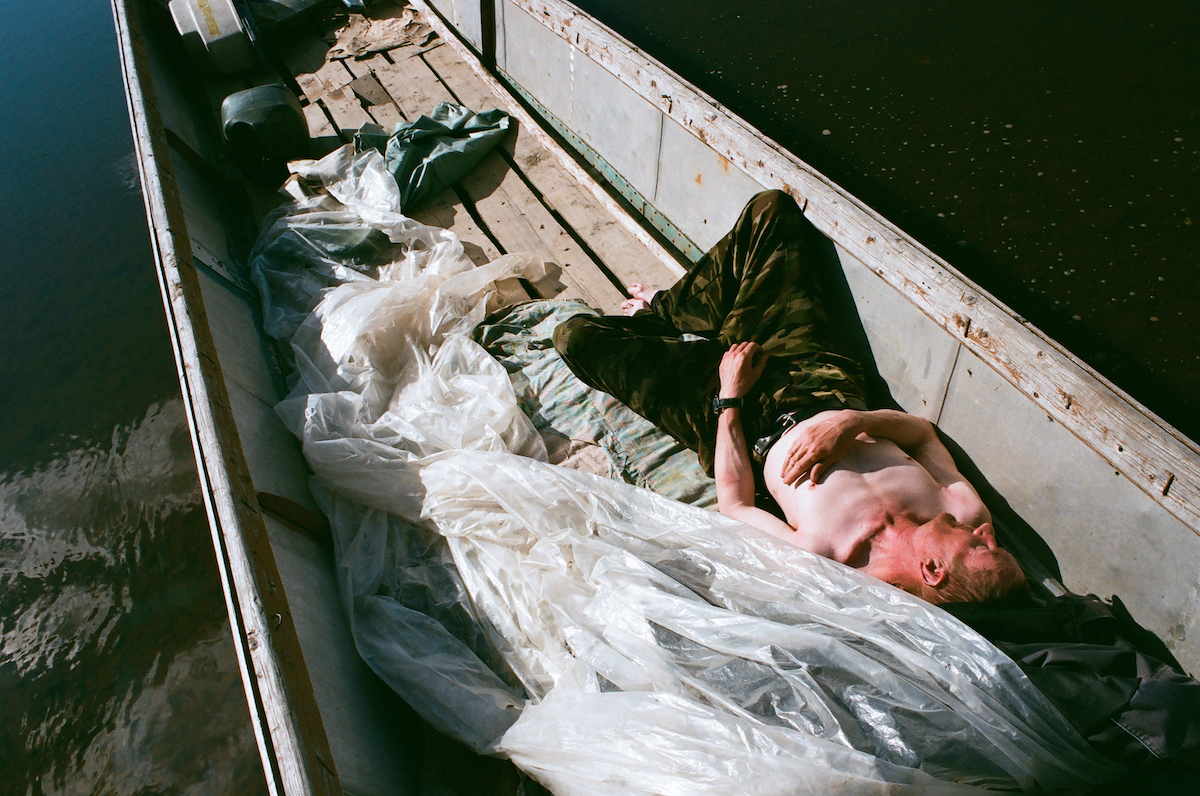Life in the fallout zone: capturing the traces of the Soviet space industry through those living in its shadow
What is the cost of the human presence in space and how does it affect our lives on Earth? St Petersburg-based anthropologist and photographer Makar Tereshin has spent the last few years researching and documenting how Russian and Soviet space programmes transformed landscapes, economies, and lifestyles. His project, Fallout Zones, follows local people living in the shadow of one of the largest spaceports in the world, the Plesetsk Cosmodrome.
Plesetsk was founded in the Arkhangelsk region in northern Russia back in the 1950s, when the area’s isolation made it perfect for secretive rocket launches. Throughout the 1970s and 1980s, the cosmodrome boasted more space-bound rocket launches than anywhere else in the world. For many in Russia, Plesetsk still carries hints of might and power as a symbol of the country’s grand cosmic dream.
Image: Courtesy of Albert Loginov, environmental and political activist from the Republic of Komi
Yet for locals living in the remote villages within 1000km of Plesetsk, such grandeur and success is as elusive as space itself. When the Soviet Union collapsed, the jobs and the security that the state provided also disappeared. The areas around Plesetsk began to decay as socialism collapsed, as did similar communities across Russia who depended on local state-run industries, even though such enterprises would exploit these communities’ natural resources. Today, Tereshin calls such areas “sacrifice zones” — a vivid example of the consequences faced by local people when denied rights and control over their own lands.
Locals have also been left to grapple with the cosmodrome’s material legacy. Since the base’s first launch in 1966, the region’s dense woodlands, swamps, and isolated villages have been showered with tons of cosmic debris — including toxic or dangerous offcasts. There are 11 fallout zones in the Arkhangelsk region, nine in the Nenets Autonomous District and four in the Republic of Komi. In the Soviet era, these fallout zones were monitored by the army and shrouded in mystery; their use by the military formally classified. When the Soviet Union disintegrated, it soon became much easier for locals to use these territories again for hunting and fishing. Soon, however, they came face-to-face with leftover space debris.
Many hunters soon recognised this as a business opportunity. Each rocket part found in the woods provided a few tons of aluminum, titanium, copper and a significant amount of silver and gold, all which could be easily scrapped and sold on. But while hunters knew the woods, they had no equipment to work with huge pieces of metal or to transport it. Self-organised groups and professional cartels began to form. Using customised saws, the first rocket scraps were refashioned into sledges. Hunters would cut large metal pieces into smaller chunks during the winter, and wait until spring to transport the debris out from the woods. Amid the post-Soviet economic crash, taking these metals to the wrecking yard was the only way to earn money. Elsewhere, some rocket parts were recycled for everyday domestic use. Fuel tubes were adapted to become in-house distilling machines, materials from the rocket’s interiors were used to waterproof wooden houses, twisted metal wrecks became small fences. But the most popular use for these rockets was to turn the upper fuselage into a local, flat boat, perfect for navigating and fishing in the low rivers of the region. Many of these boats, also known as “rockets” are still in use.
Tereshin first heard about these boats, and the fallout zones that spawned them, seven years ago, during an expedition to villages along the Mezen river in Arkhangelsk region. “This area has always been popular with anthropologists and folklorists but I decided to take a more material angle,” he says.
The phenomenon of recycling space debris has deep roots. The Arkhangelsk region was one of the few regions in Russia to remain untouched by Mongol invasions in the 13th century, while its isolated position has also allowed for a unique, independent culture to thrive. The poor quality of the soil also meant that serfdom never existed in the region to the extent that it did in Central Russia, allowing for greater individual freedom spanning back generations. The harsh climate meant that the area was populated by the strong and the bold, many of whom dedicated themselves to hunting and fishing. All of these skills came to count when local people were forced to make their own way during the post-Soviet collapse: using their wilderness skills first to discover the cosmic waste, and then to make use of it by launching a major grassroots recycling industry in the region.
The Plesetsk cosmodrome, however, continues to make its presence felt. Toxic fuel used in many of the rockets has polluted the soil; rates of cancer are higher here than on average. The recycling boom is also mainly over. Some people continue to make boats out of the rocket parts, but most of the scrap collectors active in the 90s have now retired. Tereshin is now working with former scavengers and their archives of family photos. And while the cosmodrome is still in use, the military has moved the fallout zones, ensuring that any debris only comes to earth much further north. “Rockets gliding over the Mezen river might be the only reminder of those experiments,” says Tereshin.







